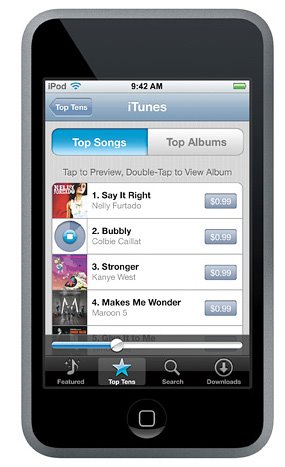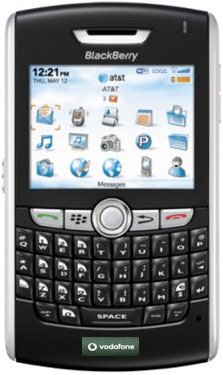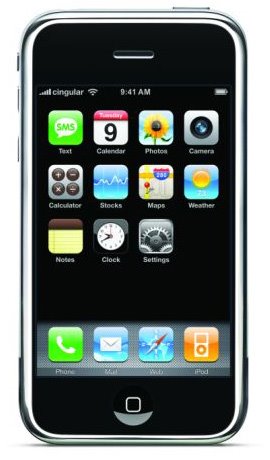Operating System(OS) is a computer program (system Software) that act as an intermediate between the user and computer hardware. This is the first software we see when we turn on the computer and again the last software we see when the computer is turned off. As computer consists of various resources (or parts) like Memory,CPU, Disks etc. it's very difficult for the user of computer to understand how to operate them directly. So, OS becomes the interpreter between the computer hardware and user. It interprets the command of users to the hardware and presents the output to user in a suitable format produced bu hardware. For example, if we want to save our Bio-Data into the floppy disk, then we don't know "how to write" or "where to write" inside the floppy disk, but our duty is simple to give command to the operating system (i.e. Save into floppy) and now it's the job of operating system to tell the floppy drive what to do exactly. In short,OS acts as an interface and hides the every details of working principal of computer from the user, thus operating system can be regarded as resources manager.
Also operating System provides user a high level abstraction. Without knowing much more internal details of any devices the user can operate them through Operating system.
What are the Functions of an Operating System?
The main functions of an operating system are as follows:
The main functions of an operating system are as follows:
- Memory Management: The basic function of an operating system is to manages the memory available to application programs in the computer. The operating system determine the amount of memory required for the programs instructions and for data. It allocates the amount of memory required and loads the program into RAM(Read Access memory).
- File Input/Output Management: One of the most important functions of an operating system is to manage the file input and the output. It manages the files stored on hard disk and other storage devices. It also provides the facilities such as to create the files, opening the files for read and writing trans fore the data and so on.
- Device Input/Output Management: The another important function on an operating system is to manage the input and output devices.It plays a role of an interpreter for various devices and language. It uses the specials program known as device drivers to translate the input/output request into commands to specified the hardware devices.
- CPU management: The operating system handles the processing jobs of the CPU. It helps the CPU to schedule its activities to meet the demand of the users and various parts of the CPU and the computer itself. The CPU gets the jobs from the keyboard or a storage medium , puts it into the memory , process the input and passes the results to the output devices.
- Operating in Batch Mode: Most of the operating system allows for operating in batch mode. In batch mode operating system user can instruct the operating system to execute a number of program one after another.
What are the main basic types of Operating System?
Operating System can be classified into following categories:
- Single-user operating system: In the operating system the single-user operating system can work at a time. I mean this operating system provides an environment where single-user can work at a time. It provides all the necessary resources to the user. The example of single-user operating system are Ms-Dos,Windows 95,98,XP,etc.
- Multi-user operating System: This is operating system allows more than one user to share and access the data and programs at a time. This operating system provides the total time into a number of time slices and schedule the task one after another in a given priority. The example of multi-user operating system are, UNIX,LINUX,Windows NT.
- Multi-tasking operating system: This operating system allows a PC(personal computer) to perform more than one task at a time.There are different types of multi-tasking operating system. Such as context switching, co-operative multi-tasking, Time-slice multi-tasking.
- Multi-processing operating system: In the operating system more than one processor are linked together in co-ordinate way. This processor share main memory and input/output devices.These processors can execute(run) different independent programs simultaneously. They can also execute the part of the same program. The example of multi-processing operating system are UNIX,LINUX,MVS etc.
- Real-time Opera
 ting System: This operating system is as online operating system that responds to input immediately. This operating system is designed for controlling and monitoring the external activities with time constrains. It is useful for controlling the external activities such as load shedding, traffic lights etc. The example of real time operating system are ccp, Bso,/RTOS.
ting System: This operating system is as online operating system that responds to input immediately. This operating system is designed for controlling and monitoring the external activities with time constrains. It is useful for controlling the external activities such as load shedding, traffic lights etc. The example of real time operating system are ccp, Bso,/RTOS.





4 comments:
Every successful individual knows that his or her achievement depends on a community of persons working together.
#together
www.ufgop.org
nice post thanks for share this post:
visit here:
aol customer care
aol customer care
aol customer care
aol customer care
aol customer care
aol customer care
Working of Computer Computers square measure devices and as a general characteristic of all devices, they break down at a selected time or they're going to cut back in their performance! just {in case} you've got a laptop you all right grasp that in case you mis- use it, it will go dangerous and you may have to be compelled to incur prices to repair it.Increasing intensity of computers within the life is making same scope and chance for putting in the systems together with additional want for maintenance and repairs. technology is additionally obtaining a lot of} innovative that clearly invitations more difficult systems and equipments.
Really Good article.
You can also read this article by clicking this link: Operating System meaning with details.
Post a Comment